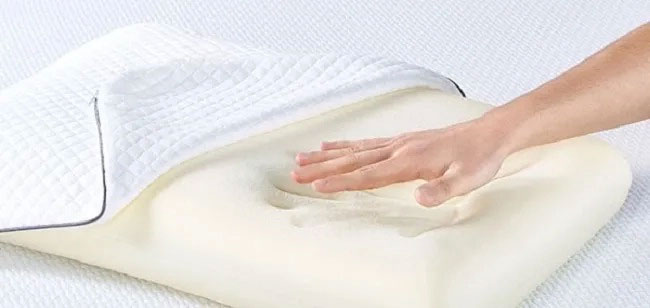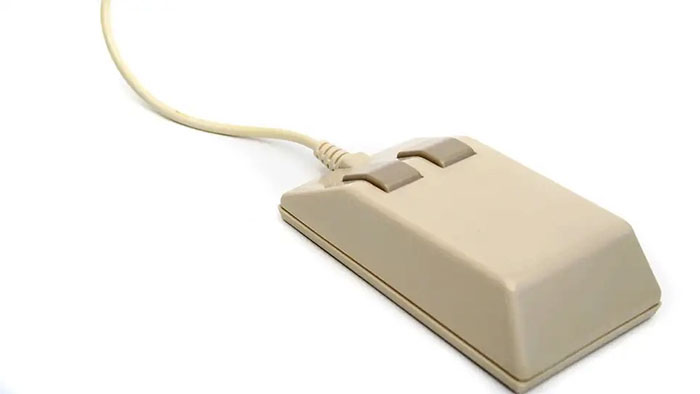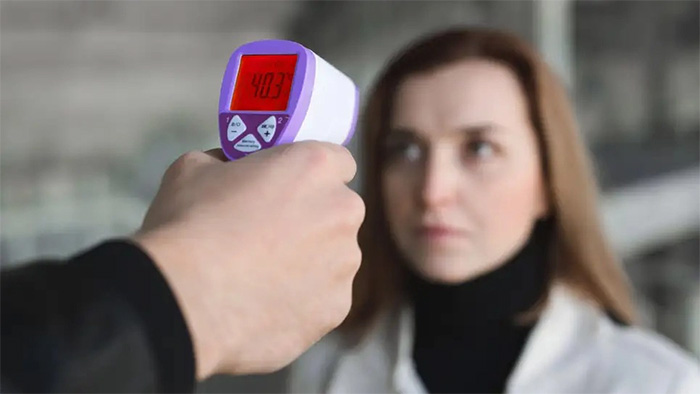NASA's most interesting inventions, seemingly far-fetched but often used by everyone
You don't have to be an astronaut to enjoy the cool things NASA has invented .
NASA Inventions and Byproducts You Can Find in Your Home
NASA is best known for ambitious projects like creating telescopes that can see the beginning of the universe, or sending humans to the moon and back. But it's also responsible for products like swimsuits, eye surgery, and the way you take selfies.
The everyday products listed below are just 15 of the more than 2,000 consumer products that have come from NASA's space programs. All are based on technology and discoveries developed directly by NASA, in collaboration with NASA, or through NASA funding.
Memory foam mattress

If your mattress, pillow, couch, sofa or whatever contains memory foam, also known as 'memory foam' due to its ability to bounce back to its original shape after use, you can thank NASA. The material was developed by NASA-funded aeronautical engineer Charles Yost and was originally used to create better impact-absorbing airplane seats for pilots in a variety of tests.
Classic computer mouse

The computer mouse was invented at Stanford University in the early 1960s by Doug Englebart, based on NASA-funded research on interactive computer input conducted by NASA computer science expert Bob Taylor.
Infrared thermometer

If you've ever checked your temperature with an infrared thermometer, remember that you wouldn't have been able to do it without NASA. The US space agency developed infrared thermometers to measure the temperature of distant celestial objects, and the technology has finally found its way into homes, becoming a key part of household thermometers.
High Performance Swimwear

Most of us don't wear high-performance swimsuits very often, but swimmers like Michael Phelps do. Speedo's LZR Racer swimsuit – the choice for elite swimmers – was launched in 2008 and features unique underwater aerodynamic properties that were developed through wind tunnel testing at NASA's Langley Research Center.
Mobile phone camera

The image sensors used in most modern digital cameras originated directly from NASA. Eric Fossum, an employee of NASA's Jet Propulsion Laboratory, was the first to use CMOS technology in a camera. The original goal was to create a better, cheaper, and more efficient camera system for spacecraft, but the technology quickly spread around the world.
Self-driving cars

We may see more widespread use of this technology in the near future thanks to NASA's Jet Propulsion Laboratory's Quantum Science and Technology Group, whose projects began in the 1980s. Among their inventions is the evocatively named 'library whisper mode optical resonator', a spherical resonator for light waves. It wasn't until recently that the technology was put to practical use, when it was incorporated into LiDAR systems for self-driving cars.
LASIK Surgery

In an effort to determine how the lack of gravity affects eye movements, NASA conducted a series of experiments aboard the International Space Station in the mid-2000s. The results were not very useful, but the eye-tracking technology developed based on it helped greatly in later experiments, making LASIK vision correction surgery possible.
Scratch resistant lenses

There have been plenty of scratch-resistant lenses, but none have been as good as the technology in Ray-Ban's Survivor line, which is licensed from NASA. NASA pioneered a way to coat sensitive instrument screens with a diamond-like carbon that makes them 10 times more scratch-resistant than other methods. This may be a bit of overkill for sunglasses, but it's still pretty cool.
Air traffic control system

The Federal Aviation Administration and NASA recently completed development of an innovative system for managing flights on the ground. It is called Integrated Arrival, Departure, and Surface (IADS) and is now in place at 27 of the busiest airports in the United States.
Grooved road surface

Even if you don't realize it, the world has gotten a little less slippery thanks to NASA. Specifically, NASA researchers demonstrated that cutting thin grooves into concrete runways to create channels for excess water to drain away reduces the risk of airport slip-related accidents. As a result, hundreds of commercial airports around the world have installed safety grooves, and then even highways. Safety grooves have also been applied to curves and overpasses, then to pedestrian walkways, ramps and steps, then to food processing plants and livestock barns.
This technology has also been proven to restore wet friction performance to worn or smooth surfaces and extend their life by 5 to 10 years, resulting in significant savings in maintenance costs.
Emergency rescue blanket

The flimsy survival blankets packed in first aid kits and often handed out at the end of marathons were developed by NASA in 1964. Its material is made by vaporizing aluminum onto a thin plastic surface and is now used in camping gear, sunshades, space telescopes, etc. As a shield, it reflects heat back to whoever or whatever is wrapped in it.
Nike Air Shoes

The sneakers are the product of two NASA innovations. The hard rubber of the sneakers is molded using 'rubber blow molding,' a process pioneered at NASA for helmet manufacturing. And the shock-absorbing material used in Nike Air comes from NASA engineer Frank Rudy.
Formula milk

While researching nutritional strategies for future missions to Mars, NASA scientists discovered a natural source of an omega-3 fatty acid previously found only in breast milk. This ingredient is now used in most infant formulas on the market.
Cordless vacuum cleaner

Black and Decker worked closely with NASA in the 1960s to produce cordless drills, hammers, and other tools that could operate in low-gravity (or zero-gravity) environments. And now you can see this technology in a variety of cordless vacuum cleaners on the market.
Water purifier

Although basic water filters have existed since the mid-1950s, it wasn't until NASA poured resources into its research for the Apollo program in 1963 that modern filtration systems began to emerge. NASA led the research in this area because they needed large amounts of clean water to be stored for long periods of time in the harsh conditions of outer space.
To achieve this goal, NASA developed a system that works by taking advantage of the ability of charcoal to absorb pollutants and particulate matter found in water when specially treated. This treatment – essentially an oxidation process that opens up millions of tiny pores between the carbon atoms in the charcoal – amplifies the charcoal's absorption capabilities, with its large, porous surface area creating multiple locations for pollutants to chemically bond to it through attraction. This leaves the resulting water free of impurities.
Microprocessor

Technically, NASA did not invent the integrated circuit, rather it was invented in 1958 by electrical engineer Jack Kilby, however NASA has invented newer and more advanced variations of the integrated circuit.
NASA's Apollo program launched the microchip revolution, with the US government purchasing more than 60% of domestic integrated circuits in the 1960s.
One of the first high-end applications of microchip technology was in the Apollo guidance computer with the DSKY interface, which was used to provide onboard computing and control for navigation, as well as control of the command module and the lunar module.
Today, integrated circuits can be found in almost every area of life, from cell phones and personal computers to microwave ovens - thanks largely to the cheap processing and manufacturing of microchips from NASA's Apollo Program.
Helmet

In the 1970s, NASA invented annealing foam, a shock-absorbing material designed to improve the safety of aircraft cushions. This annealing foam was later fitted to the helmets and seats of the Apollo spacecraft, as a lining that helped mitigate some of the extreme forces astronauts would be subjected to.
Tempering foam is a polyurethane treated with added chemicals that has both high viscosity and density, properties ideal for absorbing significant impacts and resisting energy flow. The foam is viscoelastic and temperature sensitive, meaning that when pressed against a heat source, it can be molded into a shape.
The original incubator foam was customized into foam insulation and introduced to the market in the early 1980s, after which it was quickly used in medical devices such as foam insulation mattresses and sports equipment such as American football helmets and motorcycle and bicycle helmets.
Satellite TV

Perhaps unsurprisingly, Nasa also played a major role in the invention of satellite television. The first satellite capable of relaying TV signals was Telstar 1, launched by the agency in 1962.
It began as a joint project between Bell Laboratories to develop an experimental satellite communications system over the Atlantic Ocean. Nasa then continued to develop the technology to create more advanced systems to reduce noise and errors in the transmitted signals, resulting in the ability to transmit high-definition video and audio.
- 15 quirky inventions but the idea is quite interesting
- Interesting inventions inspire life
- Interesting inventions in 2005
- 10 forgotten 'cool' inventions of renowned scientists
- 10 interesting inventions of ancient Egyptians (II)
- Interesting stories about inventions
- 10 interesting ideas in the past week
- 5 modern inventions but useless on cars
- Top 7 World War I inventions we use every day
- 15 extremely strange inventions but worth the Nobel prize
- Strange inventions in the world
- After tens of years, NASA finally revealed its 'secret' inventions
 Daily use inventions come from universities
Daily use inventions come from universities Special weight loss device helps prevent appetite
Special weight loss device helps prevent appetite 8 inventors were killed by their own inventions
8 inventors were killed by their own inventions Iran invented a motor car powered by water
Iran invented a motor car powered by water